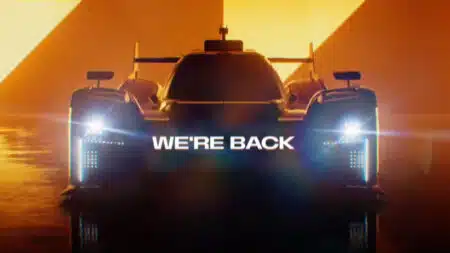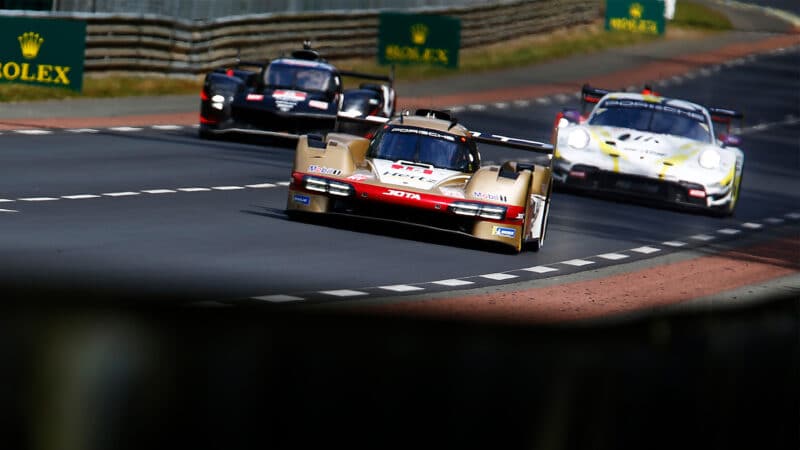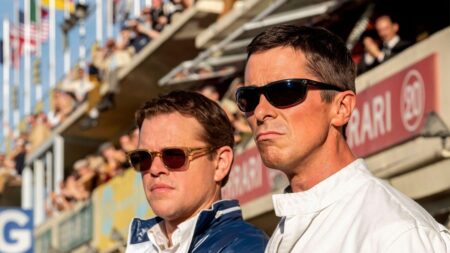
McLaren wants to win 2027 Triple Crown with Le Mans Hypercar
McLaren will enter the Le Mans Hypercar class for the very first time in 2027 – and is gunning to win motor sport's 'Triple Crown' all in one year

How does quali work at Le Mans?
It takes place over two days amid much fanfare but qualifying for the Le Mans 24 Hours might be one of the more pointless exercises in racing.
The few metres advantage that the polesitter has over the next car at the rolling start has minimal significance over 24 hours of competition. Being at the front of the pack, however, does reduce the risk of getting caught up in first lap incidents, when the field is running closely together.
Perhaps most importantly, pole position is the source of some prestige and much publicity, benefitting the sponsors of successful teams. And so, Wednesday and Thursday offers the spectacle of top-level drivers pushing the limits of their Hypercars, prototypes and GT cars, separated by just tenths of a second over the course of the 8.467 mile course.
Much like other top level series, including MotoGP and Formula 1, the initial qualifying session is a fight to get into the next one. Each car has 60 minutes to set the fastest single lap time that it can, using one driver each, from the three per team that will compete in the race.
The cars are on track at the same time in a bid to be among the top eight from each category — Hypercar, LMP2 and LMGT3. These top eight go through to the next stage. For the rest, the time they set will dictate their grid position — more on which further down.
While drivers must push to the limit for a chance of a starting place near the front, going beyond it can prove costly as Toyota’s Kamui Kobayashi found this year when he went off, causing the session to be stopped. As he triggered the red flag, his qualifying times were wiped and he will start at the back of the Hypercar pack.

Who will start at the front at Le Mans in 2024?
Getty Images
The fastest eight from each category are back on track on Thursday evening, in a 24 car, 30 minute shoot-out for the top slots. Once again, only one driver per team will be involved and the one that records the fastest lap will be the pole sitter.
The grid will normally separate itself out during qualifyng, with Hypercars the fastest of the field, followed by LMP2 cars and the the LMGT3 machines. However, sometimes the categories do get mixed up in the case of errors, deleted laps or a car failure, and times can vary between qualifying practice and hyperpole due to weather conditions.
To reduce the risk of crashes at the start, with faster cars behind slower categories, each category is separated, no matter what their best lap time
This means that all 23 Hypercars will start at the front, from the pole sitter (almost guaranteed to be a Hypercar) to the slowest Hypercar in the hyperpole shootout. Then follows the remaining Hypercars in the order of lap times recorded in qualifying practice. With no recorded time, Kobayashi will be last of the 23.
Then comes the LMP2 cars, arranged by the same logic, followed by LMGT3.

McLaren will enter the Le Mans Hypercar class for the very first time in 2027 – and is gunning to win motor sport's 'Triple Crown' all in one year

A Ford GT40 MkII which managed 12 laps at the famous 1966 Le Mans 24 Hours has become been auctioned for a record amount

Two of racing's biggest rivals are on collision course once more, with the Ford v Ferrari battle for overall Le Mans victory due to resume in 2027 after six decades — and Ford is already talking up the fight

Ford will develop a new top-tier sports car to compete for overall victory in the Le Mans 24 Hours and the World Endurance Championship Hypercar class from 2027 onwards, aiming to continue where its GT40 left off in the 1960s